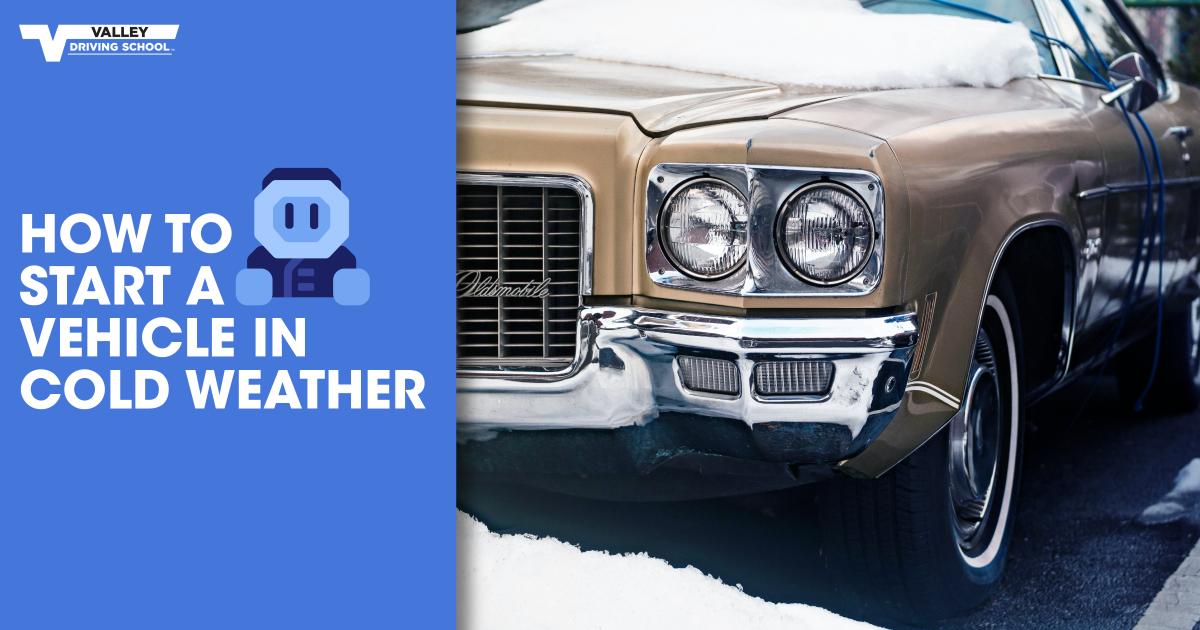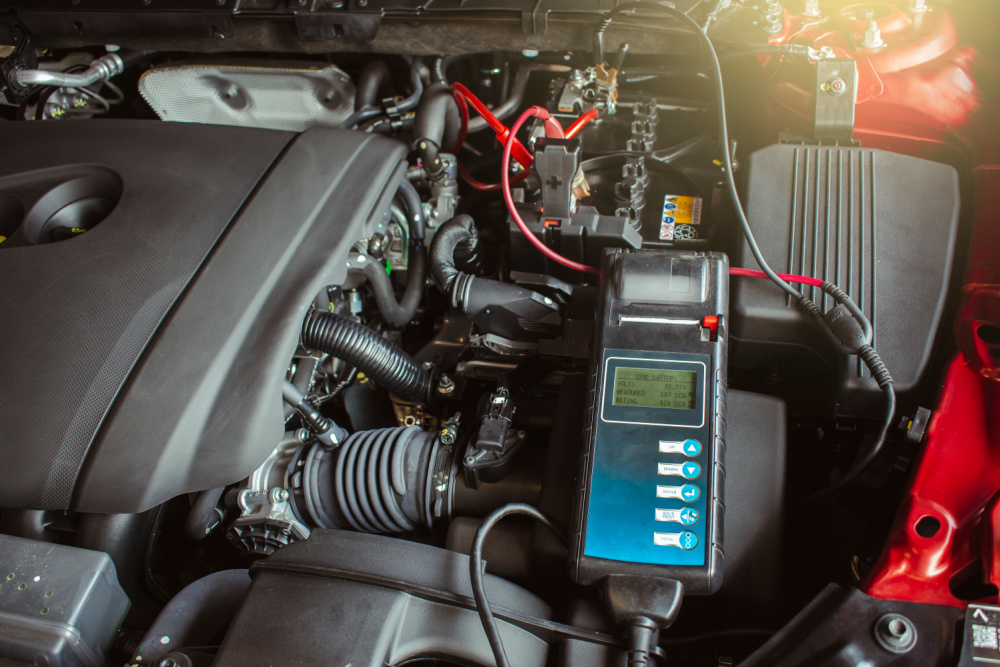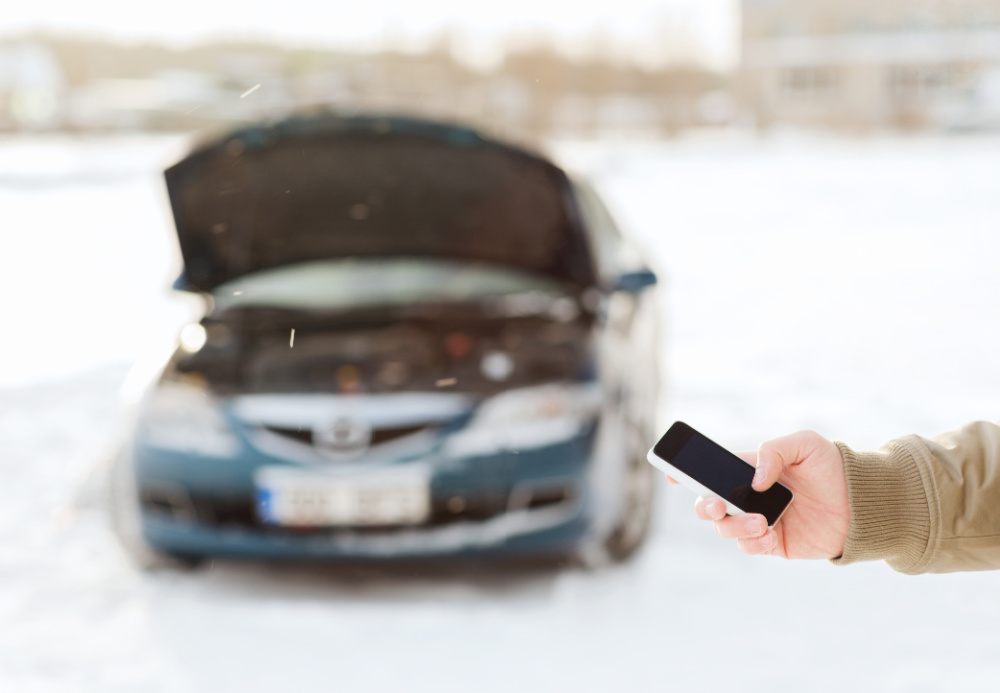Winter in British Columbia can be brutal, especially for your car! Frigid temperatures can turn a simple morning commute into a frustrating ordeal, and that can start before you even hit the road if your vehicle doesn’t start up. We're here to help you navigate winter's challenges with confidence, even if that help starts while you’re still in the driveway.

We're sharing some frequently asked questions about how to start a car in cold weather reliably, even on the coldest days, to keep you running smoothly.
How does cold weather affect your vehicle?
Before we dive into more questions, let's understand why cold weather makes starting your vehicle a challenge. As temperatures drop, the engine oil thickens, making it harder for the engine to turn over and the cold weather slows down the chemical reactions within your car's battery, reducing its ability to deliver the necessary power to start the engine.
To minimize the impact of cold temperatures and maximize the warmth of the sun, consider parking your car facing east in the morning. This positioning allows any morning sun to warm your car's engine and interior, making it easier to start and reducing the time needed to warm up. If you’re able to park inside a garage or enclosed parkade, or even a carport, this could reduce how much your vehicle needs to warm up but avoid parking in shaded areas or near large trees that can block sunlight and prolong the cooling process.
While these factors can make starting your vehicle more difficult, if you start by being prepared you don't have to worry too much about being stranded on a cold morning. Read on and you can ensure your vehicle starts reliably, even on the coldest of days, and what to do if it doesn’t!
How can I avoid starting issues in cold weather?
To ensure your vehicle is ready for the harsh winter conditions and to avoid starting issues, take some proactive steps and ensure your vehicle is fully maintained before the cold weather starts up. First and foremost, check your battery as a weak battery can significantly hinder your vehicle's ability to start in cold temperatures. Consider having it tested by a professional to determine its health, but you can always do your own visual check for signs of wear and tear. Look for corrosion on the terminals, loose connections from the battery, and rust or gauges on the battery itself.

If you drive short distances frequently, your battery may not get a sufficient charge, and you may need to use a battery charger to maintain its charge level. If your battery is more than three years old, have it tested and if it’s no longer holding a charge well, it may be time to replace it before the onset of winter.
Engine oil plays a crucial role in starting your vehicle, especially in cold weather, and using the appropriate oil can make a significant difference. Check the manufacturer's recommendations by consulting your vehicle’s owner manual to find the recommended oil viscosity for winter. Lower viscosity oils (such as 5W-30) are generally better for cold starts because they flow more easily at low temperatures. Getting an oil change before the winter weather hits, and regularly throughout the year, ensures that your engine is well-lubricated and less likely to struggle during a cold start.
Your vehicle’s electrical system also plays a role for a successful start in cold weather so inspect wiring and fuses, ensuring that all wiring is intact and that fuses are functioning properly. Turn off all electrical accessories (radio, defroster, headlights) before attempting to start your vehicle, and make sure everything is turned off at the end of every drive. These accessories can drain the battery and make it more challenging to start the engine.
Cold weather can also impact your fuel system. Depending on how cold it gets where you are, consider using a fuel additive designed to prevent fuel line freeze-up. These products help to absorb moisture and prevent ice from forming in your fuel lines. You can also reduce the likelihood of condensation forming inside your fuel tank, which can lead to frozen fuel lines, by keeping the tank topped up throughout the winter.
If your vehicle doesn’t already have an engine block heater, consider having one installed by a professional. Engine block heaters warm the engine and oil, making it easier to start the vehicle, and are an excellent investment for those who live in particularly cold areas. You can use a timer, and set it to start warming your engine a few hours before you plan to drive, ensuring it's ready without unnecessary energy use.
What is the right way to start your vehicle in cold weather?

Even with all the right preparations, you may still have to deal with an engine that’s too cold to get started. It’s important to use the correct technique when starting your vehicle. Turn the key to the start position, and hold it for no more than 10 seconds. If the engine doesn’t start, wait a minute before trying again because overworking the starter motor can cause damage. For manual transmissions, depress the clutch while starting the engine to disengage the gearbox and reduce the load on the battery. For newer automatic vehicles, you may need to depress the brake pedal in order to use the start engine button. If you have an older vehicle with a carburetor, be careful not to pump the gas pedal excessively as this can flood the engine and make starting more difficult.
Once you've started your car, it's important to warm it up gently before driving, as this allows the engine oil to circulate and lubricate the engine components, reducing wear and tear. Avoid revving the engine excessively, as this can lead to unnecessary stress, and instead let the car idle for a few minutes while the engine reaches its optimal operating temperature. If you’re driving a manual transmission vehicle, you can shift through the gears briefly to warm up the transmission. While it's important to warm up your car, avoid idling for extended periods as it can contribute to air pollution. Once the engine reaches operating temperature, you can start driving gently.
What if my car doesn’t start in cold weather?

If you've tried the starting techniques we've discussed and your vehicle still won't start, don't panic. Your next step should be to try and jump the battery. Drivers should always keep a set of good-quality jumper cables in their vehicle, and they should know how to use them correctly. Another vehicle may not always be handy when you need to jump your car, so you may want to invest in a portable jump starter as an alternative to keep on hand. If the battery is completely dead, a jump start won't be enough and you may need to replace the battery before you can get rolling.
In extremely cold conditions, fuel can gel, particularly in older vehicles or those with diesel engines. Another important item to keep on hand can be a fuel line additive like we mentioned earlier. These are great for preventative issues, but can also be a lifesaver and thaw a frozen fuel line. Most additives just need to be added to the fuel tank and the chemicals will mix with the fuel and any water, lowering the freezing point and dissolving ice blockages. When using a fuel additive, whether preventatively or to thaw ice, make sure to read through the instructions and recommendations before adding.
If you're unable to resolve the issue yourself, patience is key! Avoid excessive attempts to start your vehicle, as this can further drain the battery. A roadside assistance service or mechanic may be the next best course of action, as they have the expertise and equipment to diagnose and fix the problem.
-
Our commitment is to your safety and success on the road, and during the winter season that starts with winter car care. Now you know how to start a car in cold weather, and what to do if you can’t! Drive with confidence, and keep safety at the forefront this winter season.
